(warning: graphic photos)
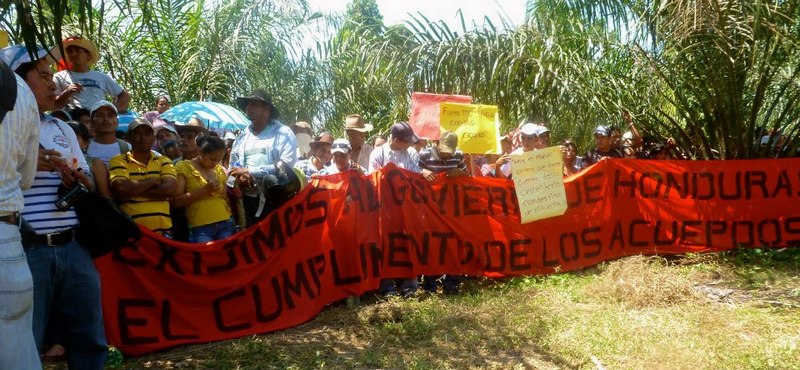
Photos: courtesy of Greg McCain
The banner reads, “WE DEMAND THAT THE GOVERNMENT OF HONDURAS FINALIZE LAND AGREEMENTS”, the agreements of which are said to be at the center of the unrest in many regions of Honduras.
PASO AGUAN, HONDURAS-Today a team from the Anthropologic Forensic Foundation of Guatemala (FAFG) exhumed the body of Jose Antonio Lopez Lara, 46. Lopez Lara went missing on April 29, 2012 after leaving his house in the village of Rigores to go fishing in the Ilanga River. Sometime earlier he reported to his family that he had been threatened by the security guards of Miguel Facussé whose palm plantation is the site where his body was discovered. Miguel Facusse is alleged to have illegally acquired a disproportionate amount of land in Honduras against Honduran law which allows for only a designated amount of land to be owned by a single Honduran. Miguel Facusse is said to have acquired more land than any one individual in the country of Honduras. Foreigners are disallowed by Honduran law to own land.
Owner of the Dinant Corporation- a maker of junk foot and cleaning products- Facusse had in the past been able to secure loans from the World Bank to fund the production of these products under his Cressida Corporation name. After reports of assassinations at the hands of his private security, the German Development Bank withdrew a $22 million investment loan in 2011. In December of 2012 Facusse told the Los Angeles Times, “My name is mud all over the world.”
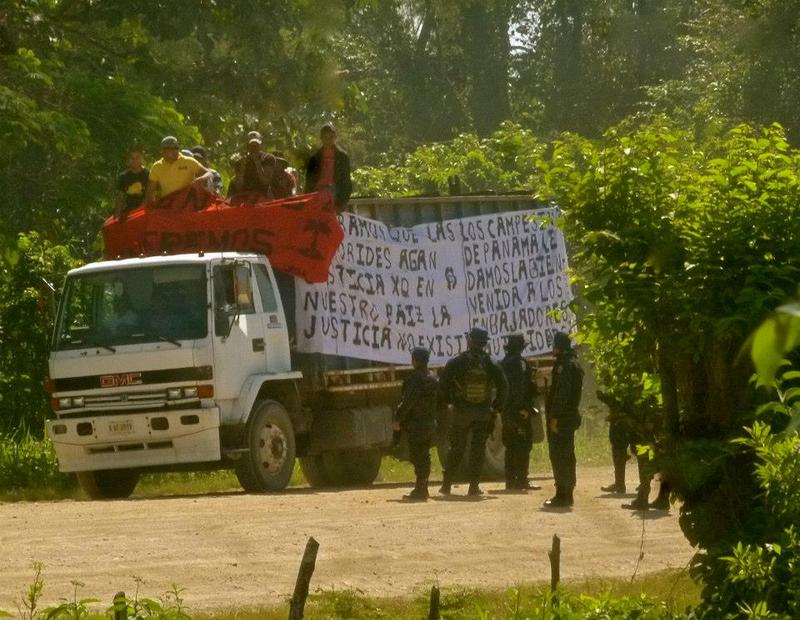
The Banners read, “WE DEMAND THAT THE AUTHORITIES BRING JUSTICE BECAUSE IN OUR COUNTRY JUSTICE DOESN’T EXIST” and “THE CAMPESINOS OF LA PANAMA WELCOME THE AMBASSADORS…”
Arriving to the exhumation was a caravan of six large trucks and several pickups of campesinos from the Lower Aguán region who stayed throughout the exhumation both to show support for the Lopez Lara family but also said that they wanted to denounce the impunity of Facussé and his guards. They said that with the aid of the National Police, the military under the command of Colonel German Alfaro from Operation Xatruch III, and President Lobo, Facusse’s private security has been known to terrorize the campesinos in various regions of the Aguan Valley.
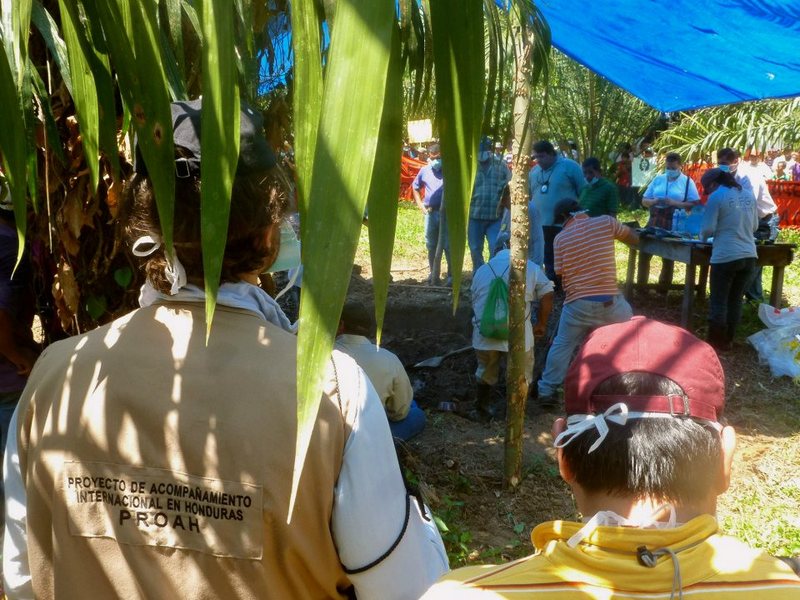
Several human rights organizations observed the exhumation including the International Accompaniment Project of Honduras (PROAH).
At this Facussé-owned plantation, Paso Aguán is also the site where campesino Gregorio Chavez’ body was found on July 6, 2012. He also reported being threatened by Facussé’s guards on the La Panama farm previous to his assassination. No investigation had been done after Chavez’ murder even after his family requested a forensic report from the Honduran government.
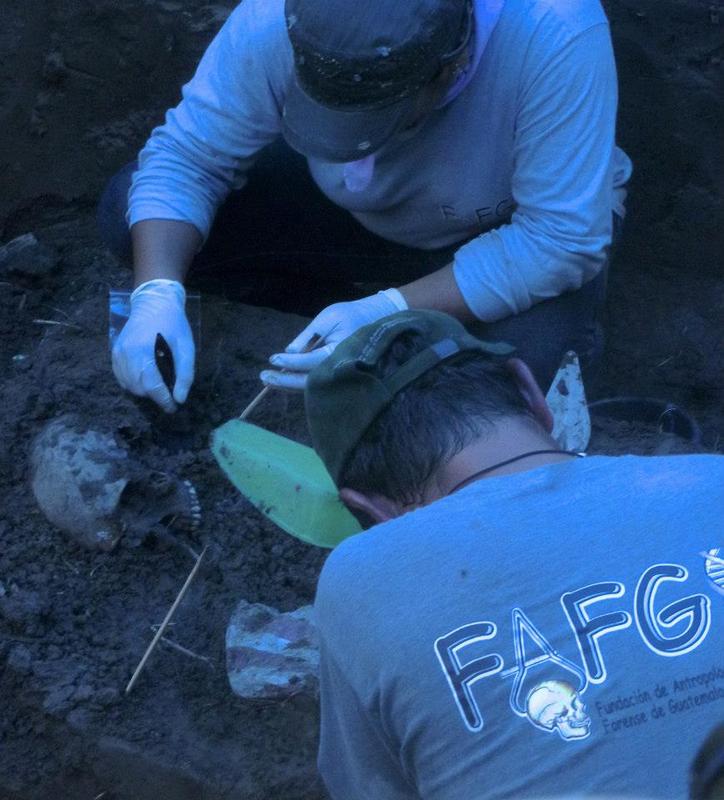
The Guatemalan Foundation of Forensic Anthropology oversaw the exhumation.
The Guatemalan team was brought in with the help of the Committee of the Families of the Detained and Disappeared in Honduras (COFADEH). The organization pressed for a detailed and accountable procedure following recent exhumations in the Moskitia that were said to have been compromised with procedural anomalies on the part of those charged with performing the exhumations.
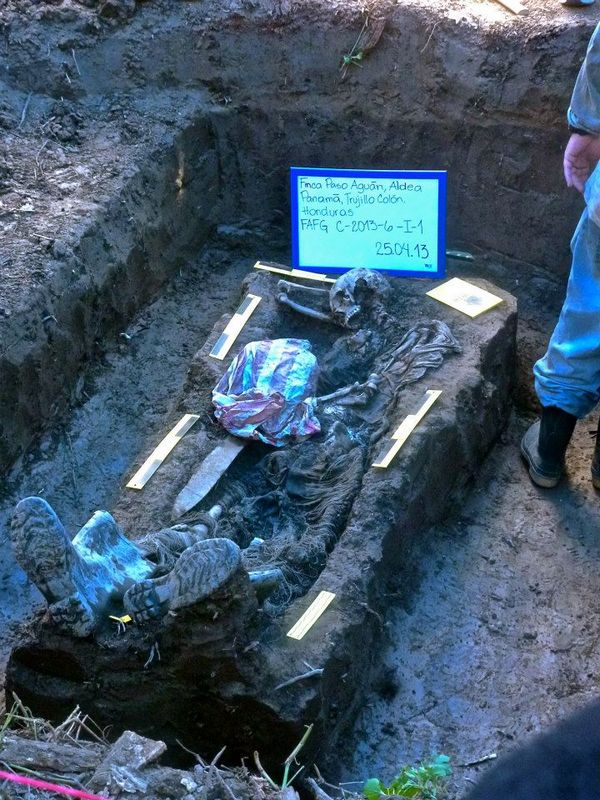
Lopez Lara’s body was discovered April 3, 2013 after the wheel of a vehicle belonging to a community member was said to have become stuck while driving over the grave. While digging out of the burrow, a boot later identified as Lopez Lara’s was seen emerging out of the ground. After this discovery, the Unified Campesino Movement of the Aguan (MUCA) contacted COFADEH who then arranged for the exhumation.
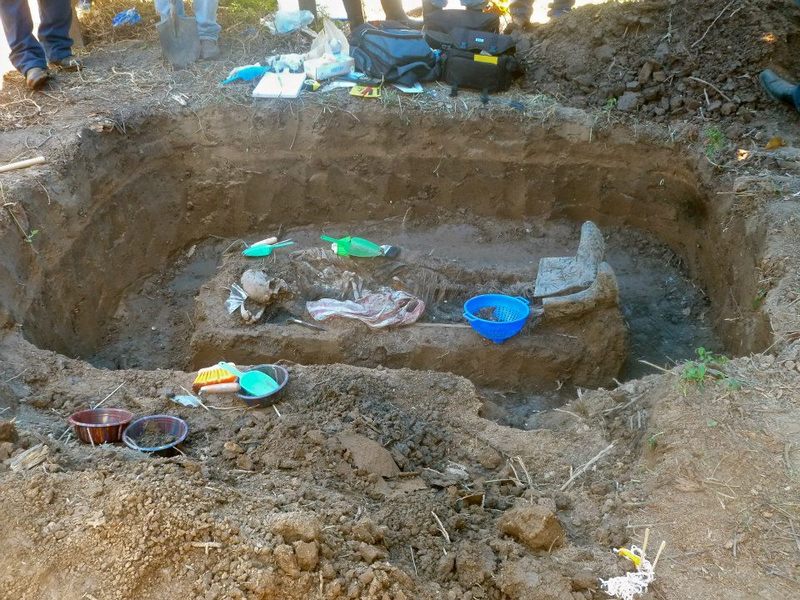
Previous to the exhumation a press conference was held in Tegucigalpa April 23, 2013 at the offices of COFADEH where MUCA Secretary General Yoni Rivas denounced the string of assassinations and repression against the campesino communities in the Aguan, “We have been denouncing the crime wave that we are experiencing in the Bajo Aguan-persecution, jailing, and now disappearances of campesinos, just because a system works to protect the interests of the big landowners”. It was in November of 2012 that Rivas expressed to The Nation Report a similar sentiment, “The campesino movement is very dismayed and worried about the criminalization of the country of Honduras because of the campesino struggle.”
Jose Lopez Lara’s sister, Rosa Ena Lara also appeared at the press conference and expressed frustration that an entire year had passed without justice. She expressed satisfaction that an exhumation was taking place and that she saw the process as one step forward in obtaining justice, “We want justice, not only for my brother, because many people have been disappeared. As family members we are very concerned because we have not seen a stance from anyone to find the people responsible.” She added that the family supported the exhumation to facilitate giving their family member a proper burial.
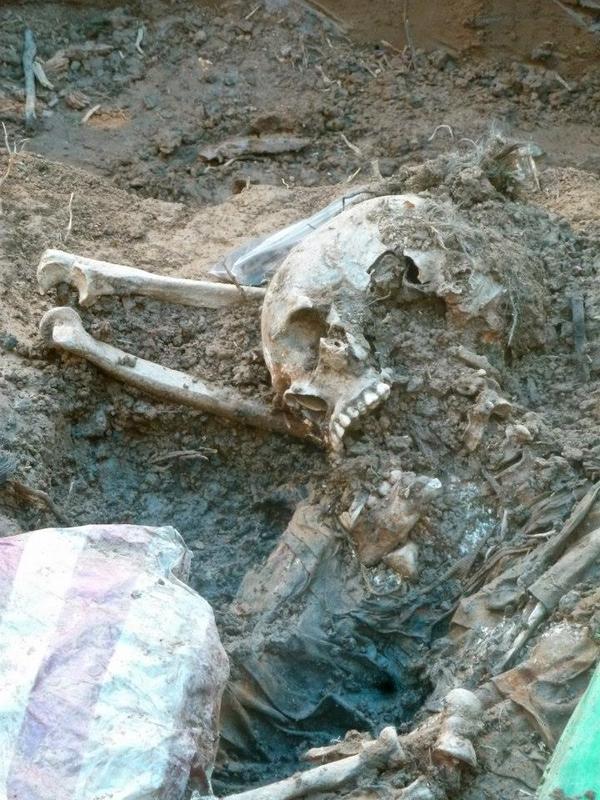
Upon exhumation, Lopez Lara’s skull showed a fracture on the right side above his ear. There also appeared to be broken bones consistent with torture and his hand was detached from his body. Lopez Lara’s wife was able to identify him based on the clothing he was wearing the day he went missing as well as his fishing bag and the boots that were found with the body.
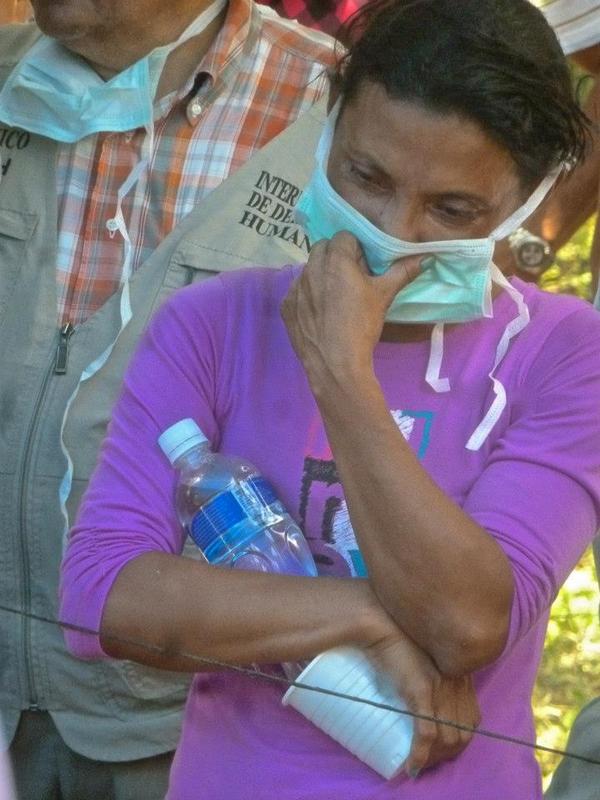
Lopez Lara’s wife Rosa Delia Gonzales observes the exhumation and identifies his remains when she recognized the clothing and fishing sack that he used the day he disappeared.
Brigette Gunther who lives in Honduras representing the School of the Americas Watch told The Nation Report that,
Many of those deaths are accused to be carried out by the security guards of Miguel Facusse who is one of the largest landowners in Honduras as well as the state security forces for instance the police, the military. And there’s widely said to be a lot of collusion between the private security guards of these large powerful landowners and figures in Honduras as well as the military and police in the area. There’s the Xatruch III Battalion which is led by another School of the Americas graduate, Colonel German Alfaro. [The group] is operating in the region and is currently waging a media campaign against the leadership of the Unified Campesino Movement of the Aguan. There are all these allegations trying to make it seem as if the campesinos are armed or that there are armed groups of campesinos when in reality the campesinos are the ones who have faced tremendous repression. They have been standing up for their right to land.”
Gunther also was present at the exhumation and describes the experience,
It was just so, so heart wrenching to see how brutally he had been treated. [Visually] you could see his cranium had a crack in it. Some of the bones appear to be clearly broken, and even just the placement of some of the bones, the way that they were found you know it’s not a natural position that a body [should be] in. So it seems that he had been pretty brutally treated if not tortured. And it seems to be such a clear situation as well because he had been threatened by the security guards of Miguel Facusse. Then he disappeared in an area and is found buried in an area that the security guards are patrolling. You hope that there would be justice in this case and hopefully there will, but unfortunately the impunity in Honduras is incredibly strong so it’s very, very rare to see people brought to justice.”
More bodies of disappeared campesinos from the area are suspected to be buried on Facussé’s plantation. In a November statement to The Nation Report, Secretary General of MUCA Yoni Rivas said, “The world needs to know the reality of what is happening in Honduras.”
Refufia Gaintan/The Nation Report
Please follow and like us:







